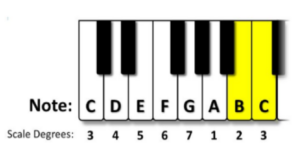In February 2022, the Supreme Court of the United States held in Unicolors, Inc. v. H&M Hennes & Mauritz, L.P., that lack of either factual or legal knowledge on the part of a copyright holder can excuse an inaccuracy in the holder’s registration under the Copyright Act’s safe-harbor provision, 17 U.S.C. §411(b)(1), which governs the effect of inaccurate information in a copyright application. In light of this decision, the Supreme Court remanded the copyright dispute between textile design company Unicolors and global fast-fashion retail giant H&M Hennes & Mauritz to the US Court of Appeals for the Ninth Circuit for further proceedings on the issue of whether Unicolors held a valid copyright in a 2011 textile design asserted in its copyright infringement claim against H&M. On remand, the Ninth Circuit concluded that under the correct standard confirmed by the Supreme Court, Unicolors held a valid copyright registration because the factual inaccuracies in its application were excused by the safe-harbor provision. The Ninth Circuit affirmed the prior jury verdict against H&M for copyright infringement and remanded with respect to the issue of damages only. Unicolors, Inc. v. H&M Hennes & Mauritz, L.P., Case Nos. 18-56253; -56548 (9th Cir. Nov. 10, 2022) (Bea, Bade, McCalla, JJ.)
The Copyright Act safe-harbor provision saves a copyright registration from invalidity when the application contains errors, except when the copyright registrant knowingly transmitted inaccurate material facts to the US Copyright Office. After the Supreme Court made it clear that “[l]ack of knowledge of either fact or law can excuse an inaccuracy in a copyright registration,” the Ninth Circuit was charged with determining whether Unicolors submitted its copyright application with knowledge that the information therein was factually inaccurate and with knowledge that the application failed to comply with the specific governing legal requirements. The Court first analyzed the validity of Unicolors’s asserted copyright registration, then addressed the remaining issues raised by H&M on appeal.
The Ninth Circuit’s first step in the validity assessment was to determine whether Unicolors’s application did, in fact, contain an inaccuracy. As in its prior decision, the Court concluded that the application was inaccurate because Unicolors registered a collection of 31 separate fabric designs as a single-unit publication when those 31 works were not initially published as a singular bundled collection, as required under the Copyright Act.
The second step of the Ninth Circuit’s inquiry looked at whether Unicolors submitted its copyright application knowing that it contained errors. This is where the Court departed from its prior decision and affirmed the district court’s decision regarding the validity of the registration. Specifically, the Court found that the single-unit registration issue was an unsettled question of law at the time of Unicolors’s application, such that Unicolors did not know that it submitted an application containing false information because it lacked the requisite knowledge of inaccuracy and lacked an intent to defraud the Copyright Office. Finding Unicolors’s copyright registration valid, the Court determined that Unicolors could maintain its copyright infringement claim against H&M.
[...]Continue Reading
read more


 Subscribe
Subscribe



